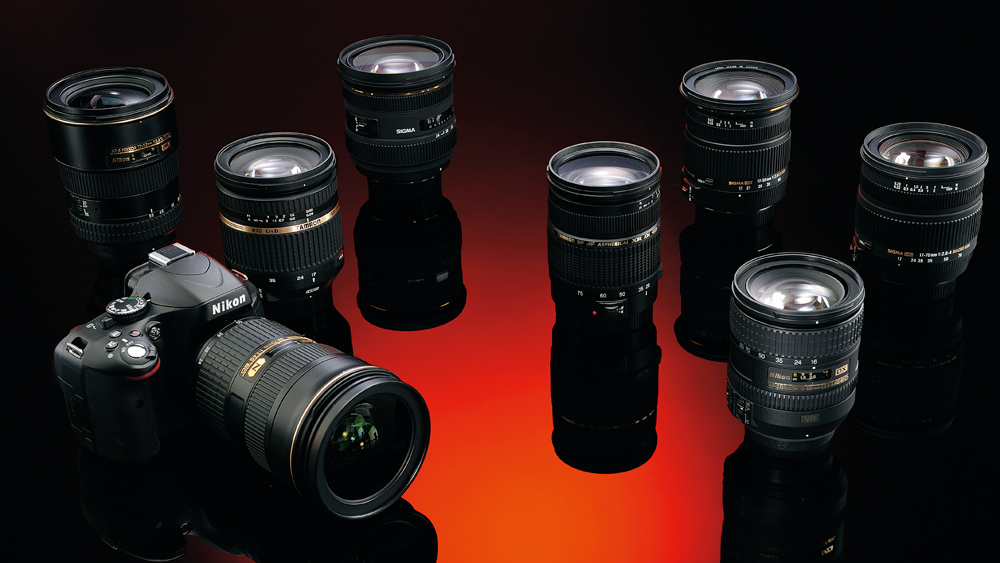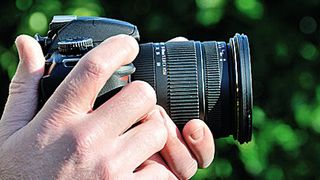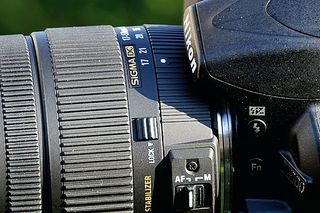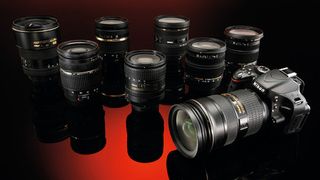Best standard zoom lens upgrade for Nikon DSLRs: 8 tested
The best zoom lens upgrade options

A standard zoom is the lens most of us use for the majority of our shooting. It can deliver everything from wide-angle to short telephoto focal lengths, providing great versatility. Plus, the overall image quality isn't compromised to the extent it usually is with a superzoom lens.
Compared with an 18-200mm lens, the more modest zoom range of a standard lens tends to result in greater sharpness at all available focal lengths. You're also likely to get less distortion, reduced chromatic aberration (colour fringing) and less vignetting (darkened corners). This is especially true when you're combining the shortest focal length with the largest available aperture.
It's no surprise, then, that Nikon sells most of its DSLRs with the option of a 'kit' standard zoom lenses. The most popular are the 18-55mm VR and 18-105mm VR. They're both good, giving acceptable sharpness, contrast and all-round image quality. Even so, it's easy to feel that they're built on a budget.
The mounting plates are plastic rather than metal, and lack the rubber weather seals featured on many of Nikon's more upmarket lenses. Also, the lenses are lightweight and can feel flimsy.

The Vibration Reduction (VR) system on the Nikon 18-55mm and 18-105mm lenses lacks the brand's popular 'Active' mode, and its AF-S autofocus is based on fairly slow motor-driven ultrasonic motors, not the faster and quieter ring-type system.
Ring-type ultrasonic autofocus is featured in all of the Nikon lenses here, as well as the Sigma 24-70mm f/2.8. It gives you full-time manual focus override in Single AF mode. Another minus point of the 18-55mm VR kit lens is that its front element rotates during focusing, which makes it tricky to use rotation-specific filters such as circular polarisers.
So what are the main upgrade choices? The first thing to consider is whether you're using an FX (full-frame) body such as the Nikon D700 or a DX body that has a smaller APS-C format (Advanced Photo System - Classic) sensor.
For FX bodies, the main contenders are the Nikon 24-70mm, Sigma 24-70mm and Tamron 28-75mm. However, there's something to be said for using these lenses on DX bodies as well.

Due to the crop factor, you'll only be using the central part of the lens' image circle, where picture quality is at its best. That means you can expect less vignetting and the possibility of greater sharpness in the extreme corners of a photo.
The downside of using an FX lens on a DX camera is that you'll sacrifice wide-angle potential. For example, a 24-70mm model gives an effective zoom range of 36-105mm on cameras such as the Nikon D3100, D5100 and D7000.
The short end of the zoom range is effectively still very close to the classic wide-angle focal length of 35mm, but the Tamron 28-75mm's maximum wide-angle equivalent of 42mm really puts it out of the running.
Either way, a standard zoom that's designed exclusively for DX cameras and zooms out to 16 or 17mm has an effective wide-angle potential of 24 or 25.5mm respectively. This gives a much wider angle of view that most photographers will find far more appealing.
Overall construction quality in the lenses on test is also a step up from Nikon's 18-55mm VR and 18-105mm kit lenses. All models in the group are more robust and each of the three Nikon lenses features weather seals.

Even so, some of the lenses still feel a bit plasticky, whereas the Sigma 24-70mm feels particularly sturdy and the Nikon 17-55mm and 24-70mm models have fully professional build quality. They're big, weighty beasts, with metal bodies, and are built to take the knocks of daily duty on tough assignments.
The drawback is that, when you're walking around, the relatively large size and weight can feel cumbersome. At nearly 1kg and 133mm in length, the Nikon 24-70mm in particular feels a bit unbalanced on a lightweight body such as a D3100 or D5100.
Need for speed
Another major consideration is the 'speed' of the lens, or its maximum aperture. As with any other type of zoom lens, standard zooms often have maximum apertures that shrink a little as you extend the focal length.
For example, the Nikon 16-85mm has a maximum available aperture of f/3.5 at 16mm but only f/5.6 at 85mm. The alternative is a 'constant-aperture' lens, where the maximum available aperture is fixed throughout the zoom range. In this class, it's typically f/2.8, two stops faster than f/5.6.

A big advantage of a larger maximum aperture is that you can get a smaller depth of field. That's good for isolating the main area of interest in a shot by blurring the background, and is particularly useful in portraiture.
Other bonuses include the potential of faster, more accurate autofocus in dull light, and a brighter viewfinder image. However, constant-aperture zoom lenses typically have less zoom range and leave you wanting at the telephoto end.
If you'd rather have the extra zoom range, it's well worth considering an f/3.5-5.6 standard zoom, and buying a 50mm f/1.8 prime lens for portraiture as well. At about £90 ($120), the Nikon 50mm f/1.8D is a cracking lens and has a faster aperture than any of the other zooms on test.
Current page: Standard zoom lenses explained
Next Page Tamron 17-50mm f/2.8 SP AF XR Di II VCGet the best Black Friday deals direct to your inbox, plus news, reviews, and more.
Sign up to be the first to know about unmissable Black Friday deals on top tech, plus get all your favorite TechRadar content.
